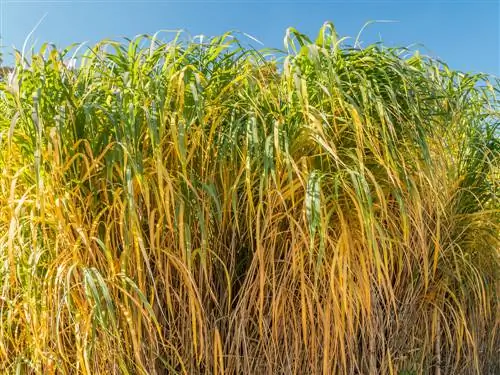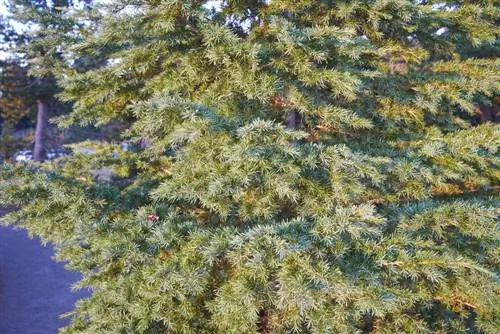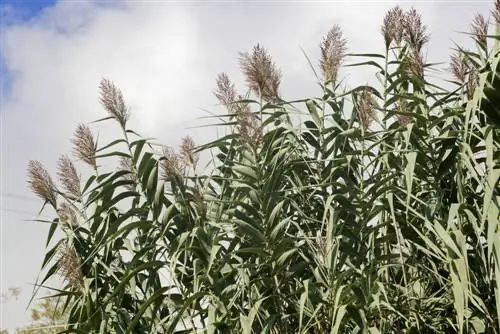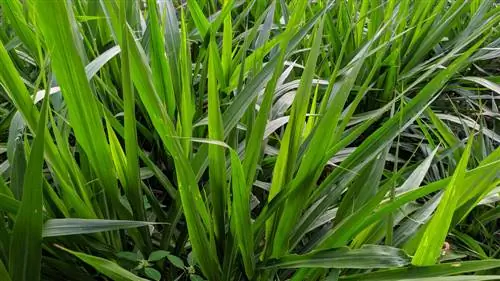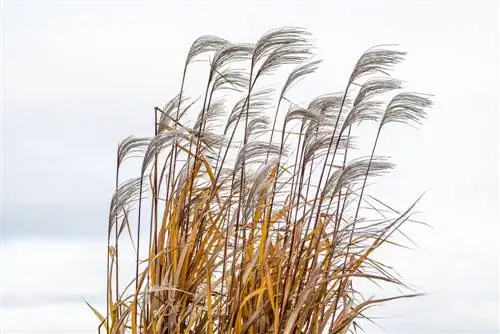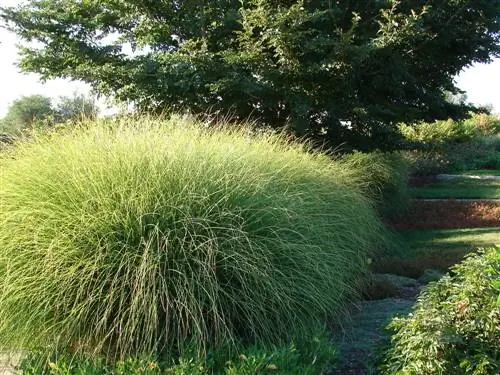- Author admin [email protected].
- Public 2023-12-16 16:46.
- Last modified 2025-01-23 11:22.
As decorative as the giant miscanthus is, it is also easy to care for. The reed, also known as elephant grass, looks particularly good as a solitary plant on the lawn, but it is also suitable as a privacy screen.

How do you properly care for giant miscanthus (elephant grass)?
Caring for giant miscanthus (elephant grass) is easy: prefer a sunny location, fresh, humus-rich and well-drained soil and water the plant regularly in the first few months. Miscanthus is hardy and requires little fertilizer.
Finding the right location
The giant miscanthus likes a sunny location best, there is at least a small chance of flowering. But it also thrives quite well in partial shade. However, the plants are then less vital and strong.
Planting giant Miscanthus
You can plant miscanthus from spring to late summer, especially if they are so-called container plants. The giant miscanthus generally does not have any great demands on the soil; it is relatively lime-tolerant, but prefers a neutral soil. Ideally, it is slightly moist or at least fresh, well-drained and not wet. The soil can be rich in humus and nutrients.
Watering and fertilizing
Freshly planted miscanthus should be watered regularly (preferably daily) for the first two to three months. This is no longer necessary later, at best during a dry period. Fertilizer is usually not necessary at all.
Giant miscanthus in a bucket
Giant Miscanthus can also be cultivated in a pot. The planter should definitely be chosen large enough so that the reeds grow quite quickly. In the pot, regular watering is just as important as occasional fertilizing or replacing the used soil.
Giant miscanthus in winter
The giant miscanthus is hardy, it tolerates frost better than persistent wetness. No special care is required. In a snowy winter, however, it makes sense to tie the leaves and leaves together so that they don't break so easily under the load.
The most important things in brief:
- Location: as sunny as possible
- Soil: fresh, loose, humus
- Planting distance: at least 1 m
- possible size: up to 4 m high and 2 m wide
- very easy to care for
- hardy
Tip
Cut your elephant grass in spring as this will protect the plant from rot in autumn.

